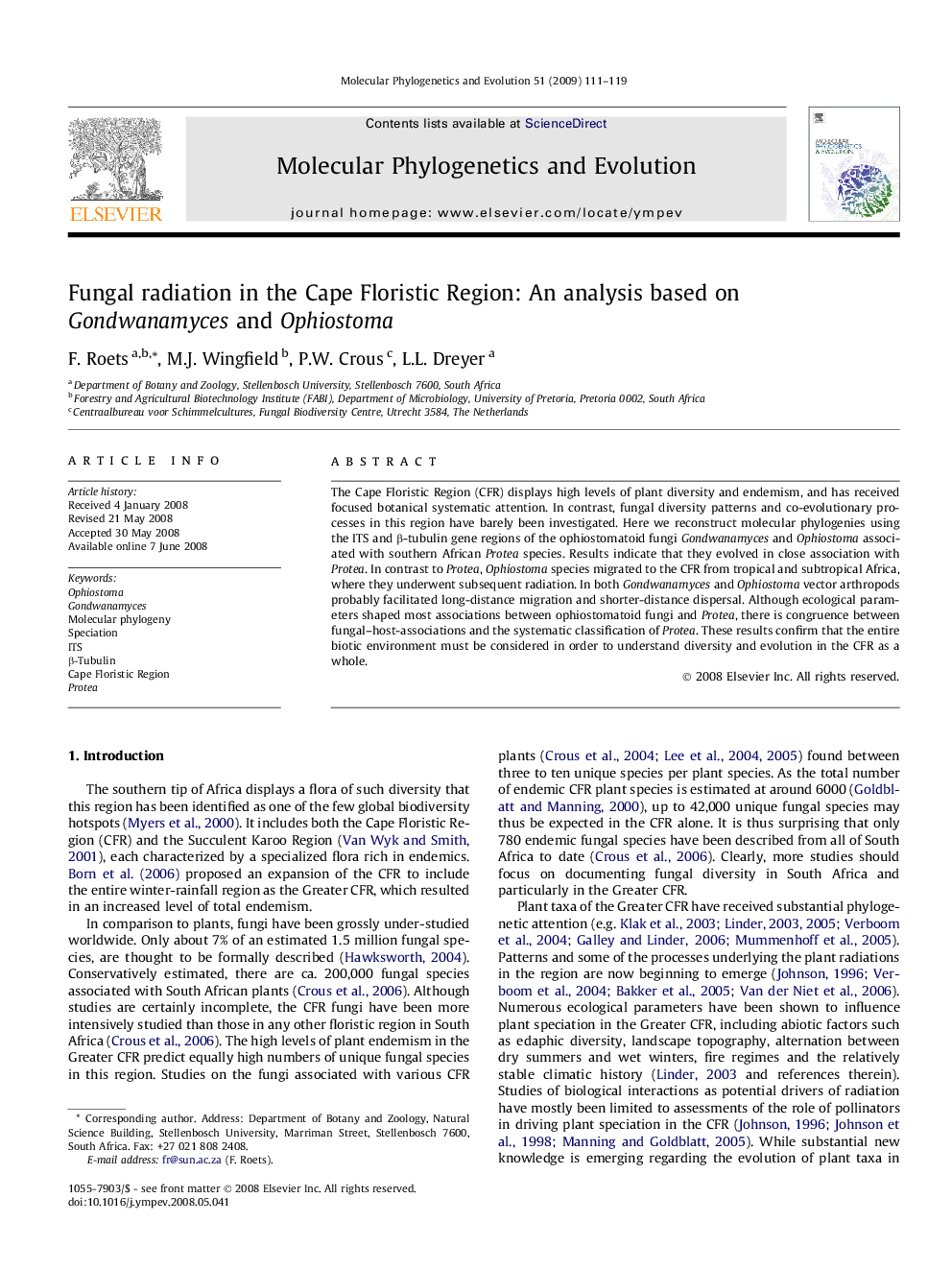| Article ID | Journal | Published Year | Pages | File Type |
|---|---|---|---|---|
| 2834938 | Molecular Phylogenetics and Evolution | 2009 | 9 Pages |
The Cape Floristic Region (CFR) displays high levels of plant diversity and endemism, and has received focused botanical systematic attention. In contrast, fungal diversity patterns and co-evolutionary processes in this region have barely been investigated. Here we reconstruct molecular phylogenies using the ITS and β-tubulin gene regions of the ophiostomatoid fungi Gondwanamyces and Ophiostoma associated with southern African Protea species. Results indicate that they evolved in close association with Protea. In contrast to Protea, Ophiostoma species migrated to the CFR from tropical and subtropical Africa, where they underwent subsequent radiation. In both Gondwanamyces and Ophiostoma vector arthropods probably facilitated long-distance migration and shorter-distance dispersal. Although ecological parameters shaped most associations between ophiostomatoid fungi and Protea, there is congruence between fungal–host-associations and the systematic classification of Protea. These results confirm that the entire biotic environment must be considered in order to understand diversity and evolution in the CFR as a whole.
